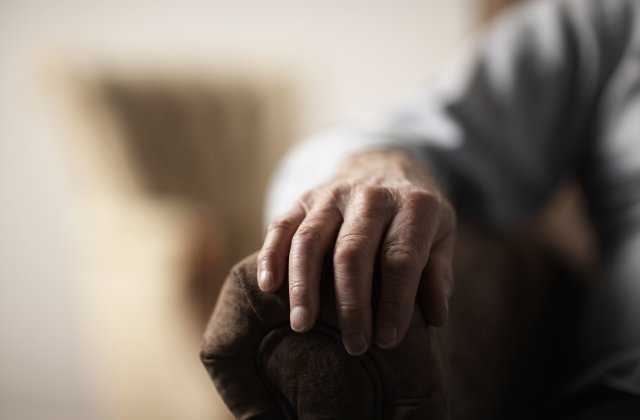
Death isn't something most people like to dwell on, but that doesn’t mean they haven’t given it any thought. Indeed, many people have definite ideas about how they would like the end of their life to play out.
“Many people don’t want to die hooked up to a bunch of machines,” says Dr. Joe Rotella, chief medical officer for the American Academy of Hospice and Palliative Medicine. What’s more, the Stanford School of Medicine says 80 percent of Americans would prefer to die at home when given the choice.
[Read: Medicare Out-of-Pocket Costs You Should Expect to Pay .]
But not everyone gets to die the way they wish. Only 20 percent of Americans actually die at home . The majority of people (60 percent) pass away in hospitals. “Medical technology is available to sustain life even when people can’t ever recover,” Rotella says. Those interventions can mean people don’t always get to die peacefully.
Fortunately for those with Medicare, there are ways to maintain some sense of control at the end for a minimal cost.
Advance directive planning. End-of-life planning starts with creating advance directives . “That’s a way to ensure you remain in control of your health care even if you get very sick,” Rotella says. These directives name who will be in charge of making medical decisions once a person is incapable of making his or her own. They can also spell out if and when interventions, such as ventilators and other forms of life support, are to be used.
Patients can work with their physicians to develop their advance directives, and Medicare will cover a visit for this purpose. Rotella recommends people take care of advance directive planning before they become seriously ill.
Palliative care. Amy Berman, senior program officer for The John A. Hartford Foundation, is living with stage IV inflammatory breast cancer. Despite the terminal diagnosis, she says she is still able to work, travel and play. That’s something she attributes to palliative care. “Some people conflate it with giving up,” she says. However, palliative care isn’t about surrendering to an illness. Instead, Berman describes it as an extra layer of support that helps treat the pain and symptoms of chronic and serious disease. “[Palliative care] will help you live the best possible life in the face of illness.”
Medicare will cover palliative care as a medical service, but Berman says physicians don’t always recommend it to patients. Most people end up receiving palliative care in hospitals, which means only those who are having a medical crisis get access to it. Berman recommends visiting getpalliativecare.org to find providers if you think you could benefit from these services.
[Read: Medicare Premiums Increase for Some Retirees .]
Hospice. When it comes to end-of-life care, no service is more widely known than hospice . Available to those with a terminal illness during their expected last six months of life, hospice includes palliative care and a variety of other services.
Hospice may bring in physicians, nurses, therapists, social workers, spiritual counselors and even housekeepers to assist dying patients. Their families have access to respite care, which can give caregivers a break, as well as bereavement services that can last up to a year after a patient has passed away. Hospice arranges for the delivery of necessary prescriptions and medical equipment, such as hospital beds or walkers.
Medicare beneficiaries get hospice care at no cost. “They automatically have full coverage for hospice services from a licensed hospice provider,” says Dr. Michael Paletta, chief medical officer for Hospice of Michigan and Arbor Hospice. The key to getting those benefits is to use a hospice provider approved by Medicare.
“There are people who will swear up and down they were charged for hospice,” Paletta says. However, those claims are often a result of either using an unapproved provider or receiving care outside a primary residence. For example, some people receive care in free-standing hospice centers. Medicare will not cover the room and board at these facilities, which means that portion of the bill goes to the patient.
Medicare hospice coverage only pays for services related to the terminal illness. If a person has diabetes and is admitted to hospice for cancer, only his or her care related to cancer will be covered. Insulin and diabetic supplies are still the responsibility of the patient.
Many states have dozens, if not hundreds, of hospice providers. They may include large for-profit companies alongside smaller nonprofits. “Many consumers are shocked to hear that,” Paletta says. “They think hospice is all one big company.” He suggests patients take time to compare providers before defaulting to the one suggested by their physician.
[See: 10 Medical Services Medicare Doesn’t Cover .]
Home-based primary care. Although not yet a widespread option, patients with life-threatening illnesses may soon have another care choice covered by Medicare. Currently undergoing a trial run by the Independence at Home Demonstration, home-based primary care and palliative care is being tested as a way to allow patients to receive services within their homes for complex medical conditions.
Berman says this team-based approach has the potential for significant cost savings while improving quality of life for the seriously ill. “It was the single most successful demonstration in its first year for [Medicare],” Berman says. If approved for national coverage, this type of care could be another option for those who are nearing the end of life, but aren’t yet eligible for hospice.
How life ends can be the result of numerous factors. No one has complete control. But by using these Medicare-covered services, people can increase their chances of leaving the world in the way they want .
10 Things You Need to Know About Medicare
Compare Offers
Compare Offers



Post a Comment